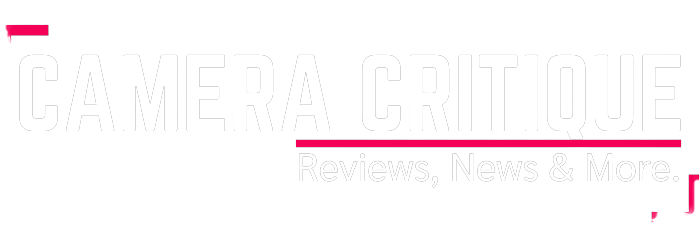In this article, We’ll look at what’s new and how the iPhone 14 Pro and iPhone 13 Pro differ.
Apple unveiled its new iPhone 14 line-up of handsets on September 16. But whenever the newest iPhone is out, the older ones tend to lose value—much like how the newest FIFA game is only worth a few cents when it first comes out.
But will the iPhone 14 Pro model be the best iPhone for photography?
The latest iPhone 14 announcement from Apple was a big one. They have announced four new models, as well as mega main camera upgrades for the iPhone 14 Pro and Pro Max, with a 48MP camera (a 65% larger sensor than on the previous iPhone 13 Pro and Max models) as well as an advanced quad-pixel sensor with an additional 2x Telephoto lenses.
Before going to much into comparison of iphone 14 pro vs 13 pro, let’s take a look at the specifications.
| Specs | iPhone 14 Pro | iPhone 13 Pro |
| Screen size | 6.1-inch OLED | 6.1-inch |
| Refresh rate | 1-120Hz | 120 Hz |
| CPU | A16 Bionic | A15 Bionic |
| Storage | 128GB, 256GB, 512GB, 1TB | 128GB, 256GB, 512GB, 1TB |
| Cameras | 48MP (f/1.8) main with 2x optical zoom, 12MP (f/2.2) ultrawide, 12MP (f/2.8) telephoto with 3x optical zoom | 12-megapixel (f/1.5) + 12-megapixel (f/1.8) + 12-megapixel (f/2.8) |
| Front camera | 12MP (f/1.9) | 12-megapixel (f/2.2) |
| Dust/Water resistance | IP68 | IP68 |
| Colors | Space Black, White, Gold, Deep Purple | Gold, Silver, Graphite, Sierra Blue, Alpine Green |
| Battery | 3200 mAh | 3095 mAh |
| Size | 5.8 x 2.8 x 0.3 (147.5 x 71.5 x 7.9 mm) | 146.70 x 71.50 x 7.65 mm |
| Weight | 206 g | 204 g |
| Today Deal | Rs. 107,900 | Rs. 129,900 |
iPhone 14 Pro vs. iPhone 13 Pro Design
Dynamic Island
The Dynamic Island has taken the place of the display notch on the iPhone 13 Pro, which is one of the most noticeable modifications. It is simply an interactive box with a cutout for the front camera and Face ID that changes size and shape in response to various messages, alerts, and actions. However, the iPhone 13 Pro and the 14 Pro share the same recognisable triple lens camera setup on the back.

Charging Port
The iPhone 14 Pro still has a Lightning port rather than a USB-C port for power and data transfer too. That may change next year though, due to changes in the law in the EU and demand for similar legislation in the U.S.
Colors
In terms of colour, you may initially choose from the Space Black, Silver, Gold, or Deep Purple versions of the iPhone 14 Pro and Pro Max. The backs of all have a matte glass finish. Midway through 2024, another colour choice will likely become available, after Apple’s colour releases for the iPhone 12 and iPhone 13.

e-SIM
On the side of the shell you’ll notice a distinct absence of a SIM tray — this is because Apple have decided to restrict the iPhone 14 Pro to eSIMs in the U.S., which has numerous benefits.
Firstly, the removal of the SIM tray gives designers more space to work with internally, allowing more features to be added. Secondly, it’s one less point of failure to consider when waterproofing. Finally, eSIMs give users more flexibility with network carriers, allowing multiple SIMs to be added without taking up extra space and also making it easier to switch network provider, which comes in especially handy when travelling.
In regions where eSIMs are already commonplace, such as the U.K., this move likely won’t be an issue, as many carriers offer eSIMs already to both new and existing customers. In regions where eSIMs are not as widely used, however, it could cause headaches and restrict consumer choice.
iPhone 14 Pro vs. iPhone 13 Pro Display
Once again, the iPhone Pro models for 2022 feature a 6.1-inch display, and the Pro Max version sports a 6.7-inch display. You’re actually getting more screen on the iPhone 14 models, however, as despite having the same measurements in inches, the bezels are smaller.
The iPhone 13 Pro and iPhone 13 Pro Max introduced ProMotion adaptive 120Hz displays to the iPhone for the first time, allowing for a display that’s both smoother and more power efficient.

Apple have given the iPhone 14 Pro and Pro Max the same capability, and then some. While the new iPhone Pro models can still reach refresh rates of up to 120Hz, they can also scale back down to 1Hz, as opposed to the 10Hz minimum of the iPhone 13 Pro models. This lower minimum refresh rate will make the iPhone 14 Pro models more power efficient as they operate more slowly than their predecessors when required.
This new display also enables the Always-On display, which you may have encountered in Apple Watches. This will let you see widgets like those you can add to your lock screen in iOS 16 on your phone even when it’s locked, allowing for convenient updates at a glance and in full colour, without a huge detriment to battery life.
What’s more, while the iPhone 13 Pro and Pro Max models featured a rated peak brightness of 1,200 nits, the iPhone 14 Pro modes offer 1,600 nits, with up to 2,000 nits of peak brightness for outdoor use. This means the new phones will perform even better in challenging bright lighting conditions.
iPhone 14 Pro vs. iPhone 13 Pro Camera
The iPhone 13 Pro used 12MP sensors for all four of its cameras. But the iPhone 14 Pro comes with a 48MP sensor on the main camera, for higher resolution images.
The primary camera of the iPhone 13 Pro models has a larger maximum aperture of f/1.5 as opposed to the iPhone 14 Pro’s f/1.78, therefore the earlier versions should be able to capture brighter photographs. The iPhone 14 Pro should, however, generate clearer, more detailed photographs in low light thanks to a significantly bigger sensor, improved image stabilisation, and Apple’s new Photonic Engine image processor.

The new quad pixel sensor also allows a 2x telephoto zoom mode, meaning you’ll have more flexibility with your zooming and framing.
In terms of video, the iPhone 14 Pro can capture 4K at 24 fps, 25 fps, 30 fps, and 60 fps, exactly as the iPhone 13 Pro. However, there isn’t any 8K as had been predicted. The iPhone 14 Pro now supports 4K/24 fps in Cinematic mode, setting it apart from the other device.
Apple touts this as a professional feature, given 24 fps is a widely used frame rate by filmmakers looking to craft cinematic video. However, this isn’t really as big of a deal as they’re making out. Pro cinematographers still probably won’t be using their iPhone over their Arri, and the iPhone 13 Pro still shoots at 4K/24 fps in normal video modes. It does give users of the iPhone 14 Pro some extra creative freedom when crafting stylized, cinematic feeling video, though.
On the front, the iPhone 14 Pro has a slightly upgraded selfie camera, with a brighter maximum aperture of f/1.9 versus f/2.2 on the iPhone 13 Pro. It’ll also use the new Photonic Engine image processor to make for brighter and sharper selfies.
iPhone 14 Pro vs. iPhone 13 Pro Chip and Performance
An improvement over the A15 Bionic found within the iPhone 13 Pro, the new A16 Bionic chipset will be in charge of the iPhone 14 Pro. The normal iPhone 14 won’t be unable to use this new silicon. An A15 Bionic processor that has been tweaked will be used in the non-pro smartphones.
Built on a 4-nanometer architecture, the A16 chip offers more transistors than the 5-nanometer design of the A15 Bionic. This essentially means it can use more transistors in the same amount of space, increasing performance and efficiency over its predecessor. In fact, Apple claims that the A16 uses 20% less power than the A15, which will improve battery life, and that it is up to 40% more powerful than the rivals; think the Qualcomm Snapdragon 8 Gen 1.

We don’t yet have any official performance figures comparing the A16 to the A15, however alleged benchmarks for this new chip published before the iPhone 14 range reveal showed around a 5% total increase in performance compared to the iPhone 13 Pro, possibly due to Apple moving to faster LPDDR5 RAM, which has yet been confirmed by Apple. The new A16 Bionic chip also benefits the iPhone 14 Pro camera too, featuring a new advanced image processor.
In terms of storage, the iPhone 14 Pro will have the same options as the iPhone 13 Pro: 128GB as a base model and 256GB, 512GB, or 1TB as upgrade options.
iPhone 14 Pro vs. iPhone 13 Pro Battery
As we haven’t thoroughly tested the new models, we now only know what Apple has to say regarding the battery life of the iPhone 14 Pro and Pro Max. According to Apple, the iPhone 14 Pro Max has a day’s worth of battery life, which equates to 25 hours of video playback. This is fantastic since it matches the specs of the iPhone 13 Pro Max.
However, there is no improvement to the 20W charging seen on the iPhone 13 Pro Max, which is something we had hoped for but didn’t expect to see.
That sounds like bad news for the iPhone 14 Pro Max, but hopefully it won’t be. For one, the battery life of the iPhone 13 Pro Max was already excellent so it’s not like the iPhone 14 has inherited a terrible power unit. And it remains to be seen whether in real-life testing we’ll see improvements with the new models.
Some FAQ’s about Apple iPhone 14 Pro vs iPhone 13 Pro
1. How many inches is the iPhone 14 pro?
The iPhone 14 Pro feature a 6.1-inch display.
2. Is the iPhone 14 the same as the 13?
The iPhone 14 does have some genuinely cool new features: an upgraded sensor on the main camera and a slightly wider aperture and autofocus on the selfie cam; car crash detection; and satellite SOS, but aside from those, it really is almost identical to the iPhone 13.
3. Is the iPhone 13 Pro and 14 Pro the same size?
Both the iPhone 14 Pro and the iPhone 13 Pro feature the same 6.1-inch Super Retina XDR OLED display.
4. Is the iPhone 14 pro camera better?
The biggest difference between the Pro and the regular iPhone 14 models must be the camera. While both feature new additions like the Photonic Engine for improving detail in low-light scenarios and Action Mode for more stable video when you’re on the move, the Pro gives us a new 48MP wide sensor.
5. Is iPhone 14 worth the upgrade?
Yes. Those with iPhones older than the iPhone 11 will notice the biggest improvements in performance, features, cameras, and battery life when upgrading to the iPhone 14 series.


